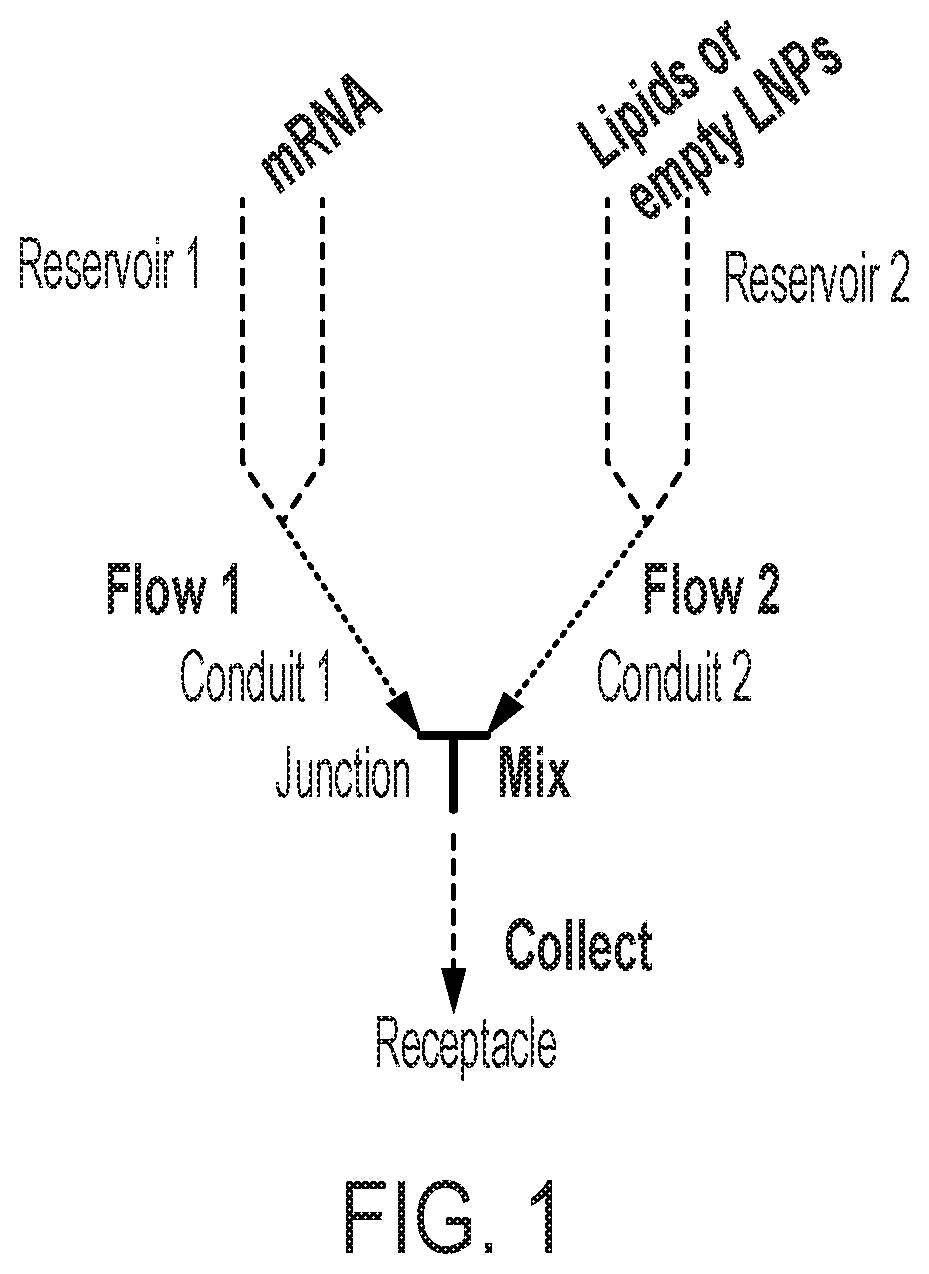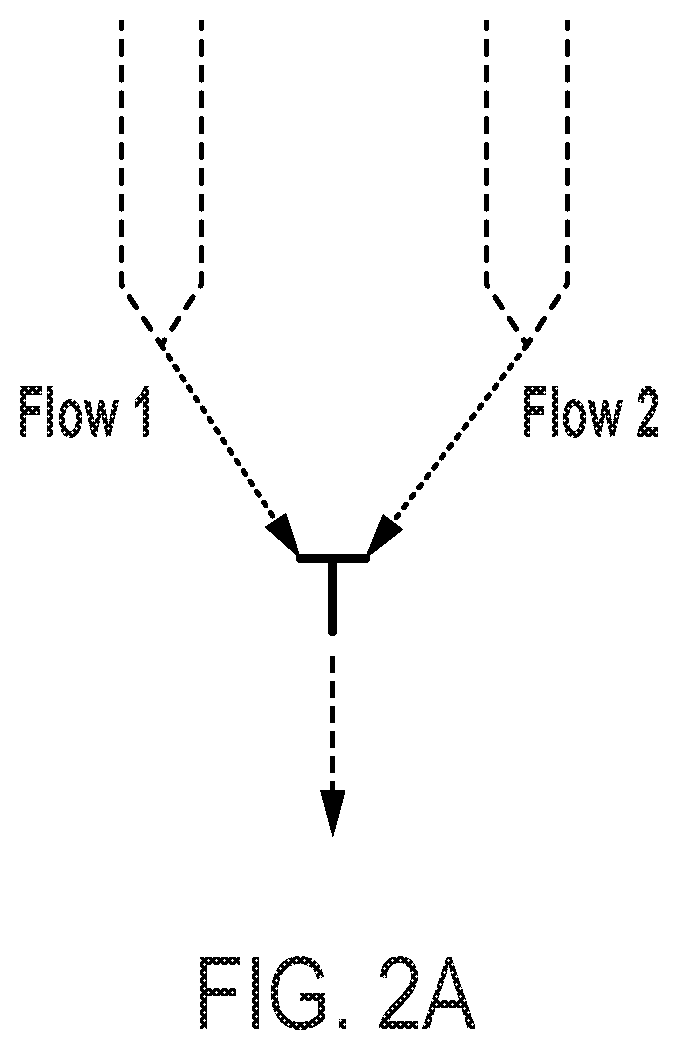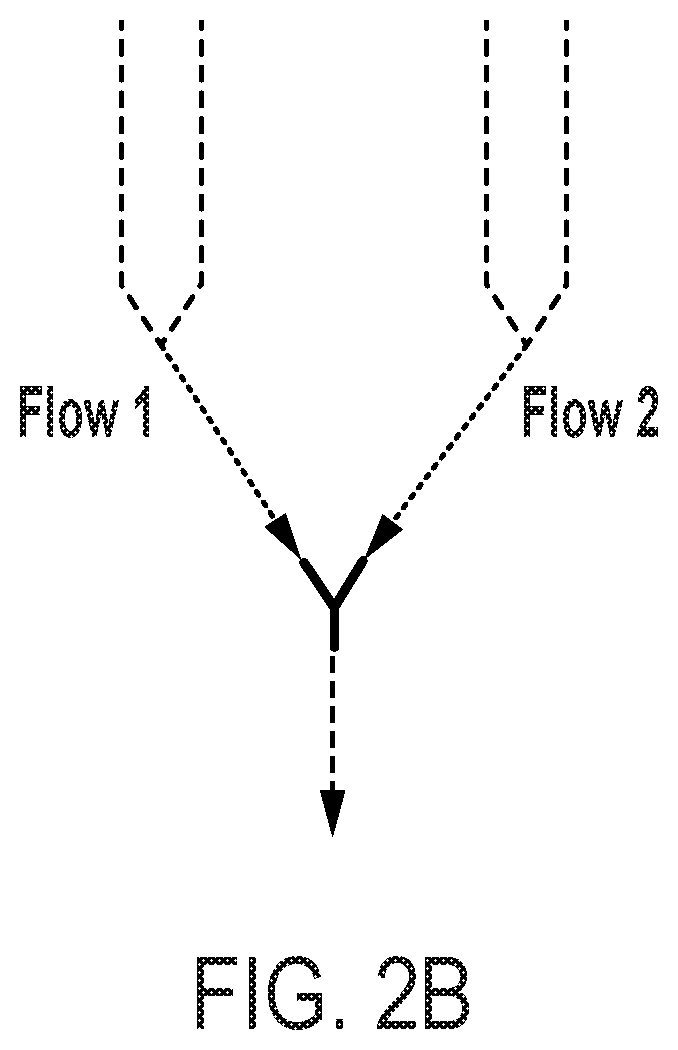Pumpless encapsulation of messenger RNA
a technology of messenger rna and encapsulation efficiency, which is applied in the direction of genetic material ingredients, organic active ingredients, peptide/protein ingredients, etc., can solve the problems of low mrna recovery and/or heterogeneous particle size, poor encapsulation efficiency of current methods for producing mrna-loaded lipid nanoparticles, and need to use specialized equipment, such as gear pumps, to achieve high-efficiency encapsulation efficiency
- Summary
- Abstract
- Description
- Claims
- Application Information
AI Technical Summary
Benefits of technology
Problems solved by technology
Method used
Image
Examples
example 1
ased Nucleic Acid Encapsulation
[0254]This example illustrates a gravity-based nucleic acid encapsulation process. As used herein, Process A refers to a conventional method of encapsulating mRNA by mixing mRNA with a mixture of lipids, without first pre-forming the lipids into lipid nanoparticles. As used herein, Process B refers to a process of encapsulating messenger RNA (mRNA) by mixing pre-formed lipid nanoparticles with mRNA. As compared to Process B, Process A does not involve pre-formation of lipid nanoparticles. Process A and Process B include those described in WO2016004318 and WO2018089801, respectively, which are hereby incorporated by reference.
[0255]FIG. 1 illustrates an exemplary encapsulation process using the methods described herein. The exemplary encapsulation process of the present invention can be applied to both Process A and Process B. The exemplary process shown in FIG. 1 includes 1) a first reservoir to provide a desired nucleic acid in aqueous solution; 2) a ...
example 2
f Liquid Flow Rate in the Process
[0260]The liquid flow rate can be controlled in the process shown in FIG. 1 in order to achieve a desired flow rate and resultant mixing properties. One way to control the flow rates and the mixing of the solutions contained in the reservoirs is to adjust the diameter of at least one of the Reservoir (e.g. Reservoir 1 and / or Reservoir 2), the conduit, and / or the junction. FIGS. 3A and 3B illustrate adjustments to the diameter of a conduit and the resultant impact had on the liquid flow rate due to conduit diameter. As can be seen in FIGS. 3A and 3B, the larger the diameter, the greater the flow of liquid through the conduit.
[0261]One manner to achieve a desired diameter and resultant flow rate is by placing a constrictor (e.g., pinch bulb, lid, and clip) in one or more of the reservoir, conduit and / or junction. Placement of constrictors at each of these parts of the process is illustrated in FIG. 4A-4D. The placement of the constrictor will alter the...
example 3
ughput Formulations Processes
[0263]The process as described herein can also be used in high-throughput scenarios. For example, a series of processes as described herein can be connected such that the process would comprise at least 10, 20, 30, 40, 50, 100, 150, 200, 250, 300 or more pairs of first conduit streams and second conduit streams. This would allow, for example, that the first conduit stream provide multiple mRNA solutions if so desired. Likewise, this the second conduit stream can provide multiple lipid solutions if so desired. In this manner, an assembly-line like approach is achieved, such that liquids are added to pairs of reservoirs at the same time, then the liquids are added to the next pairs of reservoirs in succession. This is illustrated in FIG. 7. An exemplary high throughput process is shown in FIG. 8.
PUM
| Property | Measurement | Unit |
|---|---|---|
| Fraction | aaaaa | aaaaa |
| Fraction | aaaaa | aaaaa |
| Flow rate | aaaaa | aaaaa |
Abstract
Description
Claims
Application Information
 Login to View More
Login to View More - R&D
- Intellectual Property
- Life Sciences
- Materials
- Tech Scout
- Unparalleled Data Quality
- Higher Quality Content
- 60% Fewer Hallucinations
Browse by: Latest US Patents, China's latest patents, Technical Efficacy Thesaurus, Application Domain, Technology Topic, Popular Technical Reports.
© 2025 PatSnap. All rights reserved.Legal|Privacy policy|Modern Slavery Act Transparency Statement|Sitemap|About US| Contact US: help@patsnap.com



